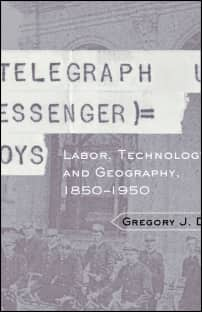The telegraph and the domestic home
By Kristopher A. Nelson
in
October 2017
400 words / 2 min.
Tweet
Share
“American District Telegraph Company was originally conceptualized as a business service, but it quickly began to sell itself as a service for the home as well.”

Please note that this post is from 2017. Evaluate with care and in light of later events.
In considering how the telegraph and privacy law interacted in the nineteenth century, I’ve developed the theory that the failure of telegrams to gain the same constitutional privacy protections granted to mailed letters and, eventually, to telephone calls, is due in part to a failure to connect it to the domestic home (the strongest source of privacy rights in American law).
I still think this theory, in the context of privacy in the United States, has merit. The telegraph was primarily a “public sphere” technology, in that its first focus was on business communications and then, secondarily, on a much more limited basis (even if only due to cost), on personal communications by individuals (who even then had to share the communication with a third party — the telegraph operator).
But I have, interestingly, found an example — in Greg Downey‘s book Telegraph Messenger Boys: Labor, Technology, and Geography 1850-1950 (2002) — of a telegraph company marketing its service for the domestic market:
American District Telegraph Company was originally conceptualized as a business service, but it quickly began to sell itself as a service for the home as well. … The telegraph companies advertised the social function of telegrams to women very early … But these were by definition upper-class women with enough income and social obligations to require telegraph services.
This did not mean the installation of telegraph lines in private residences (unlike telephones), but rather the dispatch of messenger boys who provided various domestic services (a kind of TaskRabbit of its day), as well as delivering and transporting messages on behalf of the household.
I think my argument — that jurists of the day failed in large part to maximize this connection to domestic life — still holds, but this is nonetheless a great example of telegraphic innovation (and suggests, perhaps, that today’s Internet innovators are possibly not as innovate as they might appear at first glance…).